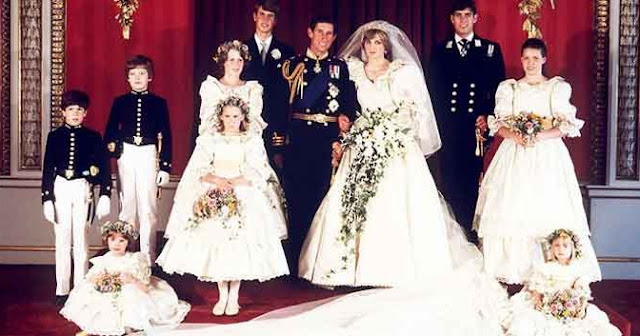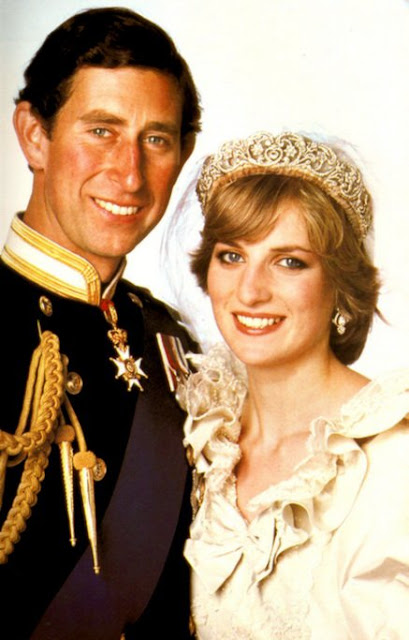Prince Charles, the oldest son of Queen Elizabeth II and Prince Philip, is the heir apparent to the British throne. Born on November 14, 1948 as the oldest son of Queen Elizabeth II and Prince Philip, Prince Charles is the longstanding heir apparent to the British throne. Under public scrutiny his entire life, Charles graduated from Trinity College before embarking on a military career which culminated with him commanding the HMS Bronington. He married Diana Spencer in the summer of 1981 to huge media fanfare, though the couple would eventually divorce in 1996 after years of gossip and scandal. Charles later wed longtime love Camilla Parker Bowles some time after Princess Diana's death. He is the father of Princes William and Harry and is also a grandfather. Among his many philanthropic and Harry and is also a grandfather. Among his many philanthropic and environmental endeavors are the Prince’s Trust and the Prince’s Rainforest Project.
Background and Early Life
Prince Charles was born Charles Philip Arthur George on November 14, 1948, in London, England. The son of Queen Elizabeth II and Prince Philip, Charles ascended the royal hierarchy at an early age. His mother became queen when he was only three after the death of his grandfather King George VI in 1952. As Elizabeth's oldest child, Charles became the heir apparent to the British throne and received the title of Duke of Cornwall. Charles was also destined to become Great Britain's oldest heir apparent, with his mother remaining queen for more than six and a half decades.
In 1956, Charles went to the Hill House School in London before heading off to boarding school at the Cheam School the following year. In addition to his education, he had increased responsibilities as he was made the Prince of Wales and Earl of Chester at the age of nine. Beginning in 1962, Charles changed schools again to go to Gordonstoun in Scotland. Later in the decade he also studied in Melbourne, Australia as an exchange student.
Charles then studied archaeology, anthropology and history at Trinity College, part of the University of Cambridge, from 1967 to 1970. In addition to his studies, he was active in campus life, involving himself in several activities such as polo. After receiving his degree in 1970 (the first royal heir apparent to do so), Charles embarked on a career in the military.
Military Service
After six months of aviation training with the Royal Air Force, Charles joined the Royal Navy in 1971, going on to serve on the HMS Norfolk and receiving a promotion in 1973 to acting lieutenant.
During the mid-'70s, Charles joined the Royal Naval Air Station to receive helicopter training, and later served as a helicopter pilot for the 845 Naval Air Squadron, based on the HMS Hermes. His time with the Hermes included a tour of Caribbean and Canadian waters before he took up additional course work at the Royal Naval College in Greenwich. In 1976, Charles ended his military service as commander of the HMS Bronington, the same year that he established the Prince's Trust, a charitable organization dedicated to helping improve the lives of disadvantaged youth.
Towards the close of the decade, Charles further expanded his military skill set with parachute training, having already taken the reigns at times as the pilot for the Queen's Flight, the monarchy's official aircraft. The prince was eventually promoted to Group Captain for the Royal Air Force in 1995, and in the new millennium was again promoted to the rank of Air Chief Marshal.
Marriage to Diana
As a public figure, Charles came off to many as intelligent, aloof and a bit awkward. He was used to having every move he made scrutinized by the press, but even he could not have been imagined what a sensation his relationship with Lady Diana Spencer would cause. The two had known each other when they were young but were reintroduced in the late 1970s. Despite a 13-year age difference as well as divergent interests, the couple became engaged in February 1981. The public took a strong liking to his shy, former kindergarten teacher fiancée, finding her more accessible than the reserved prince. They were married on July 29, 1981, in a lavish ceremony that was broadcast around the world and watched by millions of people.
Divorce and Tragedy
Charles and Diana had two children together. Their first son, Prince William Arthur Philip Louis, was born on June 21, 1982, and their second son, Prince Henry "Harry" Charles Albert David, was born on September 15, 1984. Unfortunately, their common love for their children was not enough to hold what was billed as a fairy tale marriage together. The union became strained over the years with royal responsibilities, personal conflicts, media pressures and infidelities. Charles reportedly reignited a relationship with his former flame, Camilla Parker Bowles, while married to Diana. The couple officially separated in 1992 and divorced in 1996.
Diana, Princess of Wales, died in a car crash in Paris in August 1997. Despite their differences, Charles traveled with her sisters to France to accompany her body back to England. During her funeral procession, he walked with their sons—William, 15, and Harry, 12—and Diana's brother, Earl Spencer. Charles took his role as father to his grieving sons seriously, asking the media for privacy for his family.
Marriage to Camilla and Philanthropy
After years of quietly maintaining their relationship, Charles married Camilla Parker Bowles on April 9, 2005. She then became the Duchess of Cornwall and now often accompanies her husband on many of his official visits. Besides his royal duties, Charles has been become a leading philanthropist. In addition to the Prince's Trust, he has backed a huge array of charitable organizations, supporting efforts to improve educational services, fund arts initiatives, support sustainable business endeavors, provide employment opportunities to older citizens and help the environment.
In 2007, Charles launched the Prince's Rainforest Project, a global initiative with corporate and celebrity backing to curtail tropical deforestation and thus aid the quest to stanch climate change. And in a nod to religious diversity and the multicultural nature of modern England, Charles has also promised to have a multi-faith coronation if or when he takes the throne.
In 2007, Charles launched the Prince's Rainforest Project, a global initiative with corporate and celebrity backing to curtail tropical deforestation and thus aid the quest to stanch climate change. And in a nod to religious diversity and the multicultural nature of modern England, Charles has also promised to have a multi-faith coronation if or when he takes the throne.
In addition to his philanthropic work, Charles is also an avid watercolorist and has published several books, including the 1980 children's story The Old Man of Lochnagar, 2010's Harmony: A New Way of Looking at Our World and 2012's The Prince's Speech: On the Future of Food.
Grandchildren
In 2013, Charles took on a new role: He became a grandfather with the arrival of George Alexander Louis—known as "His Royal Highness Prince George of Cambridge," the son of Prince William and Duchess of Cambridge Kate Middleton—on July 22. Soon after his grandson's birth, Charles released a statement: "Both my wife and I are overjoyed at the arrival of my first grandchild. It is an incredibly special moment for William and Catherine, and we are so thrilled for them on the birth of their baby boy." Charles soon had a granddaughter as well, Princess Charlotte (with a name honoring both her grandfather and maternal aunt), born on May 2, 2015.
BIOGRAPHY CAMILLA PARKER BOWLES
Camilla Rosemary Shand (ex-wife Parker Bowles), born July 17, 1947 in London, is the second wife of Prince Charles, Prince of Wales. Since their marriage she is known under the predicate of Her Royal Highness the Duchess of Cornwall.
The official site of the Prince of Wales mentions that she should use the title of "Her Royal Highness the Princess Consort" on her accession to the throne.3 As a second wife, legal experts agree on this position . Others, on the contrary, consider that his position as second wife does not prevent the Duchess of Cornwall from becoming queen consort of the United Kingdom, if her husband accedes to the throne.
The official site of the Prince of Wales mentions that she should use the title of "Her Royal Highness the Princess Consort" on her accession to the throne.3 As a second wife, legal experts agree on this position . Others, on the contrary, consider that his position as second wife does not prevent the Duchess of Cornwall from becoming queen consort of the United Kingdom, if her husband accedes to the throne.
Camilla Shand, born July 17, 1947 in London, spent her youth in Plumpton, a small village in the Sussex Hills. She is the daughter of Major Bruce Shand, an officer of the British Army converted into the wine trade, and Rosalind Cubbitt of the Ashcombe family of barons.
By her father, she is the niece of Elspeth Howe (Lady Howe) 4, British politician and peer, granddaughter of the writer Philip Morton Shand. Her mother is the great-granddaughter of Alice Keppel (born Alice Edmonstone) (1866-1947), who was the mistress of the Prince of Wales, Edward, the future King Edward VII (1841-1910), the great-grandfather of Prince Charles.
It also includes Arnold Joost van Keppel (c.1670-1718), first earl of Albemarle, favorite of William III of England, stadtholder of the United Provinces (1672-1702) ) and King of England (1689-1702).
By her father, she is the niece of Elspeth Howe (Lady Howe) 4, British politician and peer, granddaughter of the writer Philip Morton Shand. Her mother is the great-granddaughter of Alice Keppel (born Alice Edmonstone) (1866-1947), who was the mistress of the Prince of Wales, Edward, the future King Edward VII (1841-1910), the great-grandfather of Prince Charles.
It also includes Arnold Joost van Keppel (c.1670-1718), first earl of Albemarle, favorite of William III of England, stadtholder of the United Provinces (1672-1702) ) and King of England (1689-1702).









































